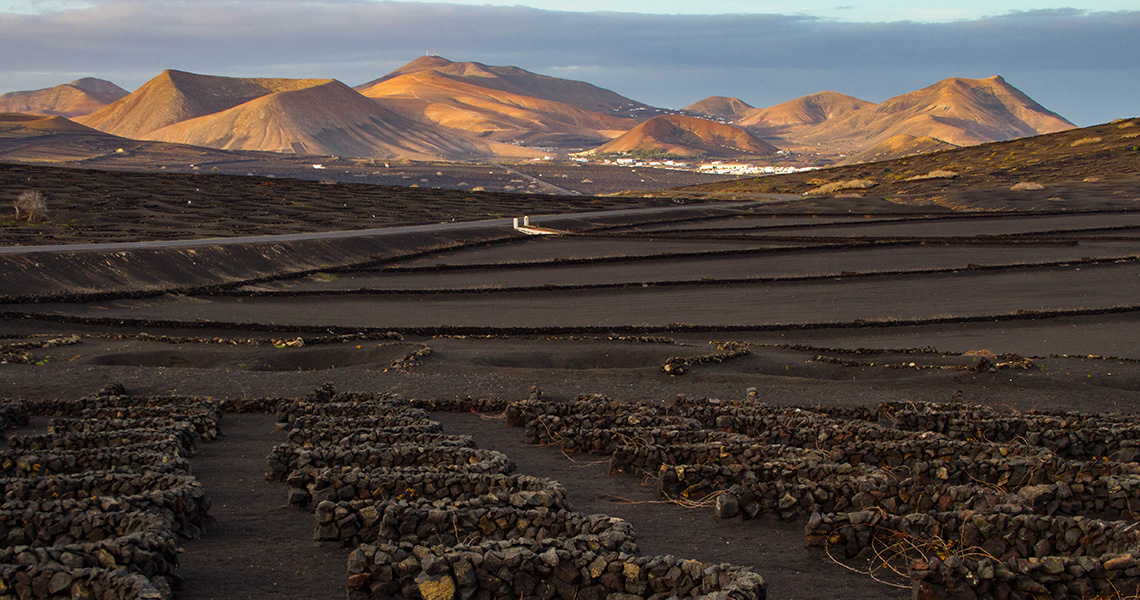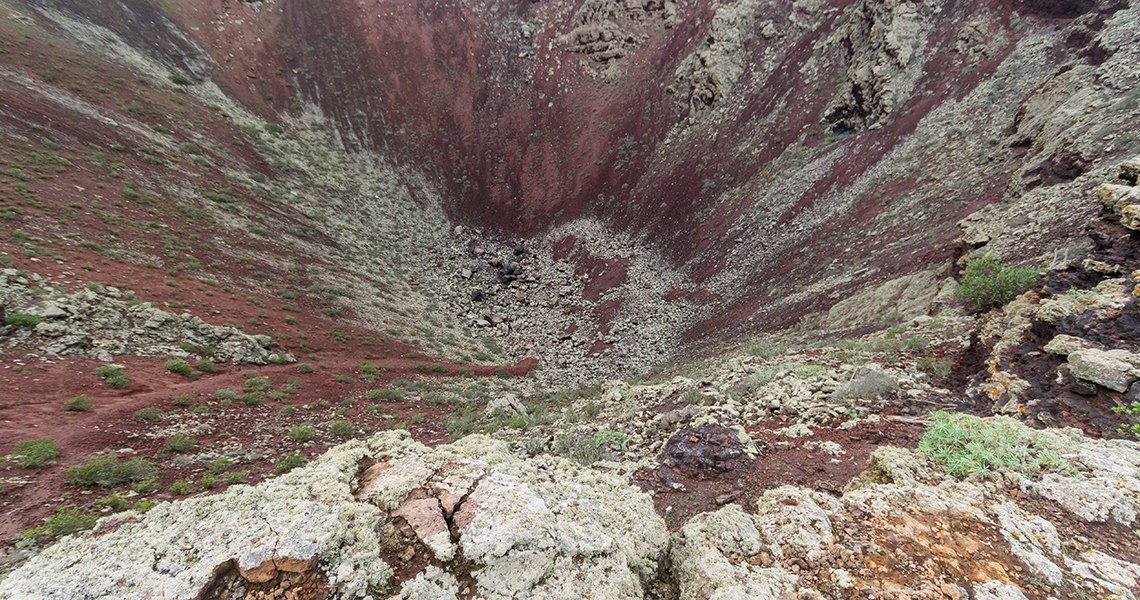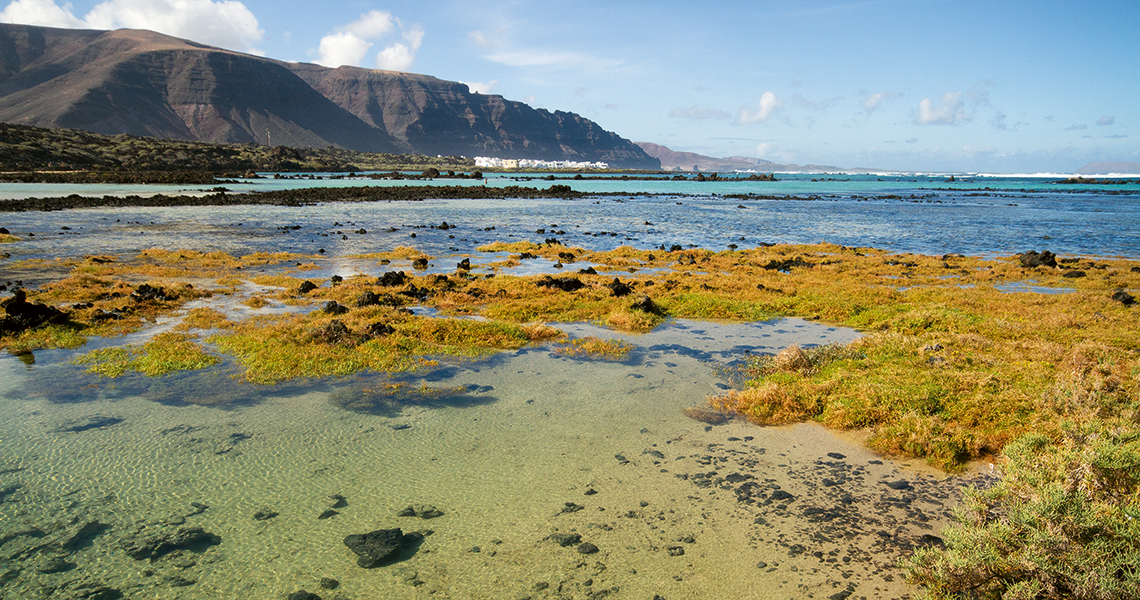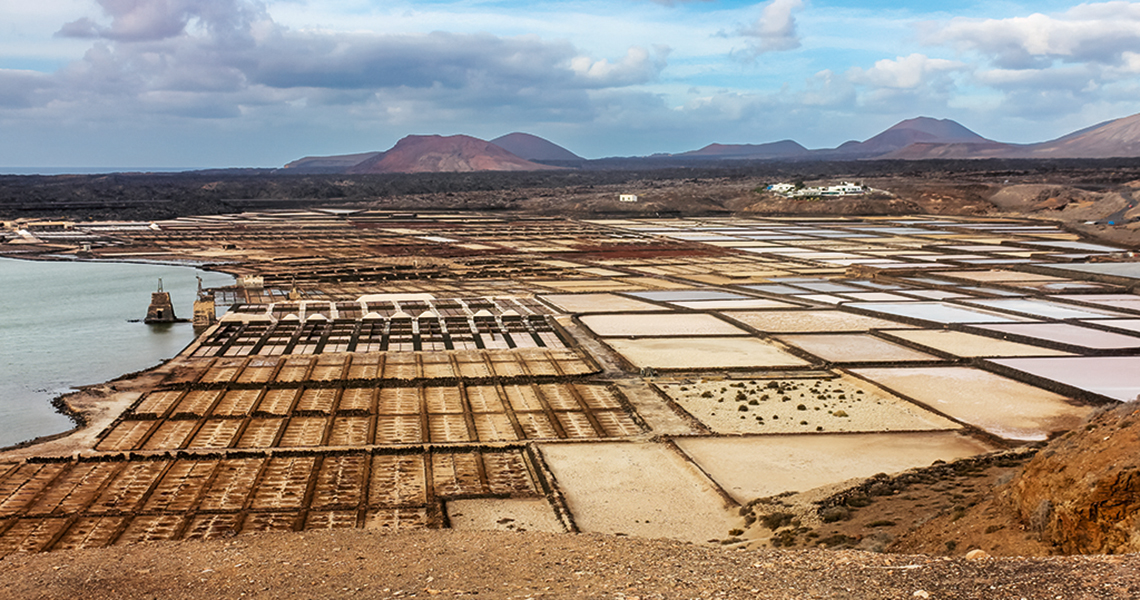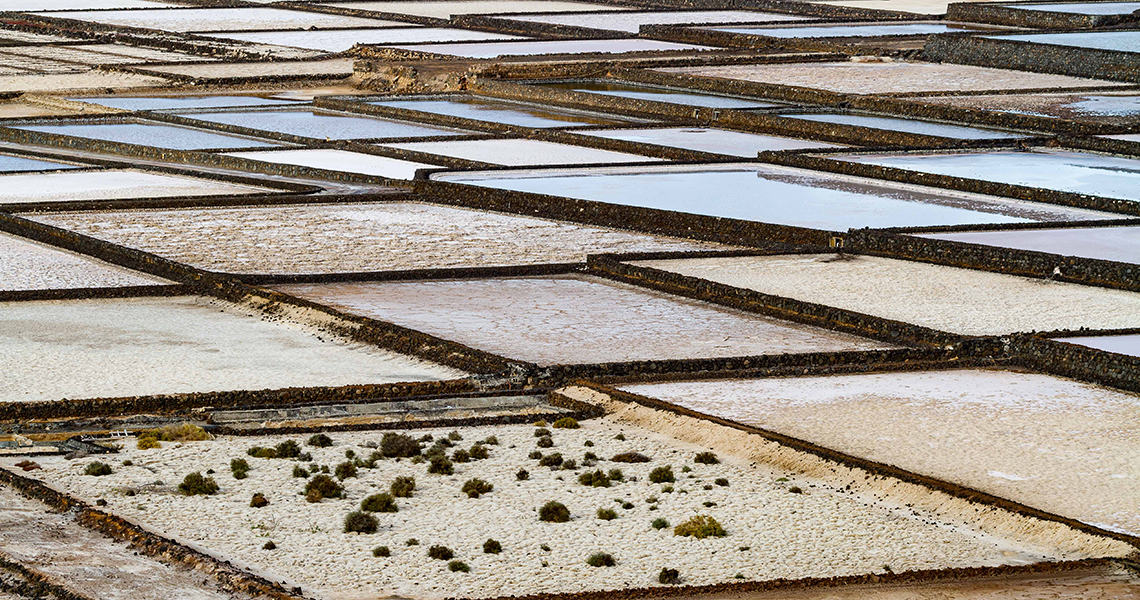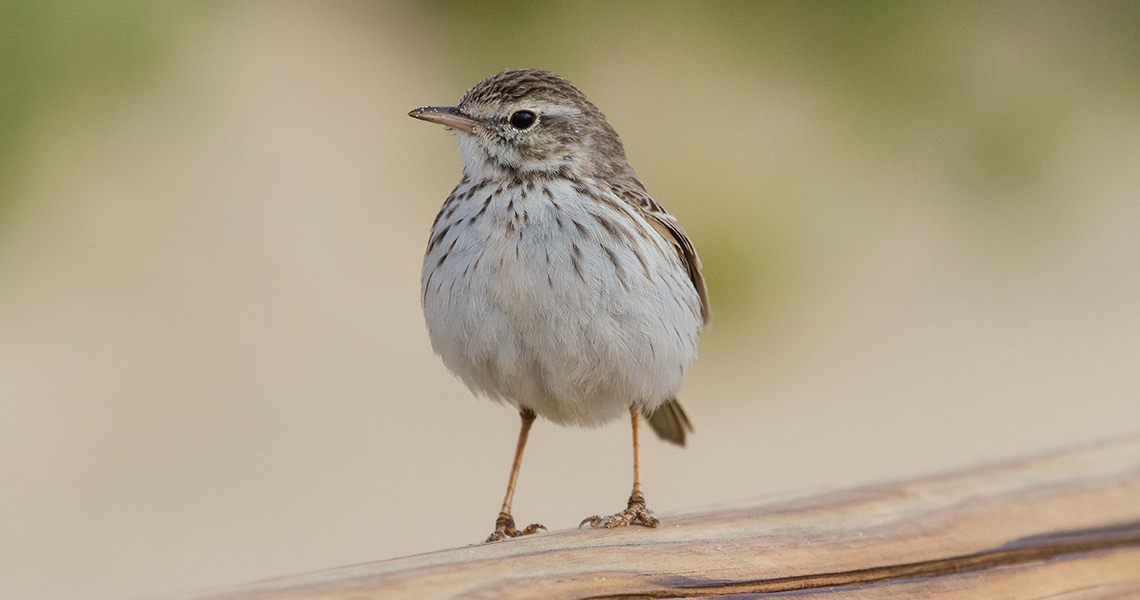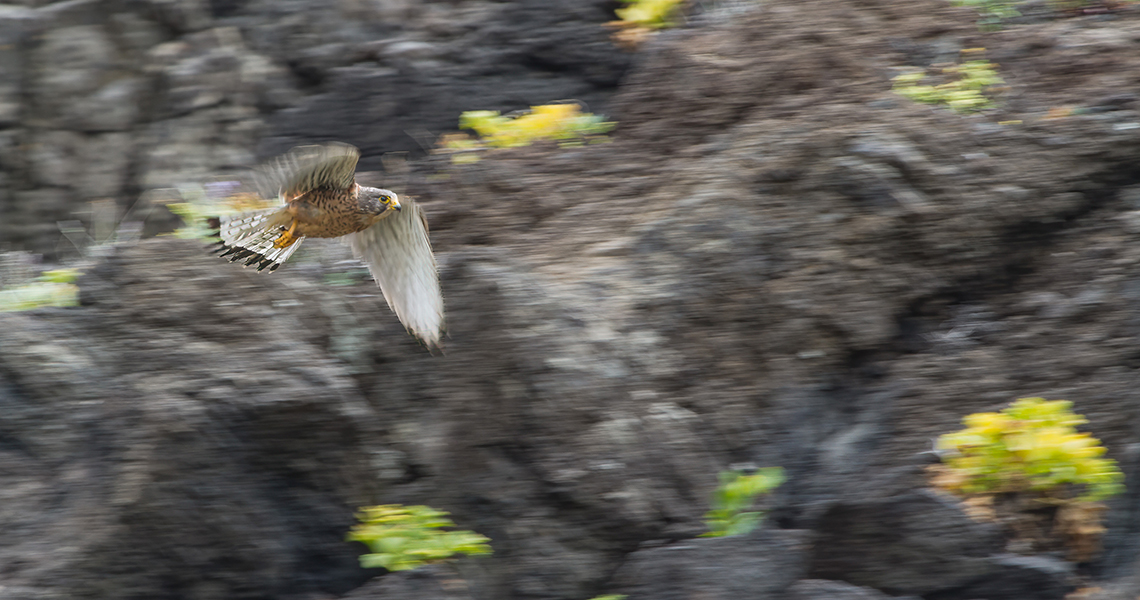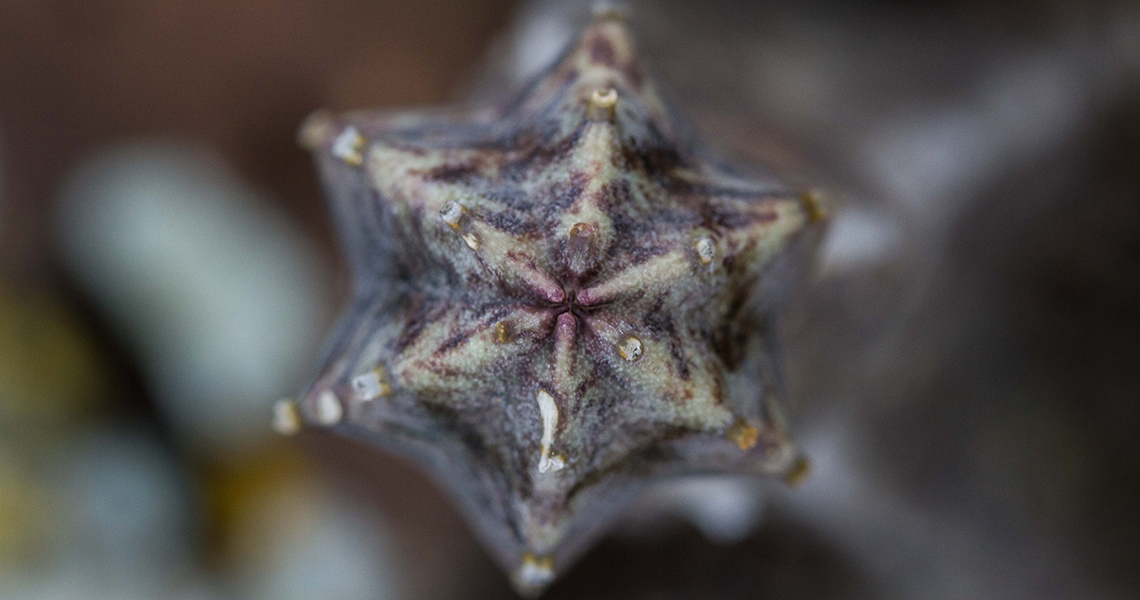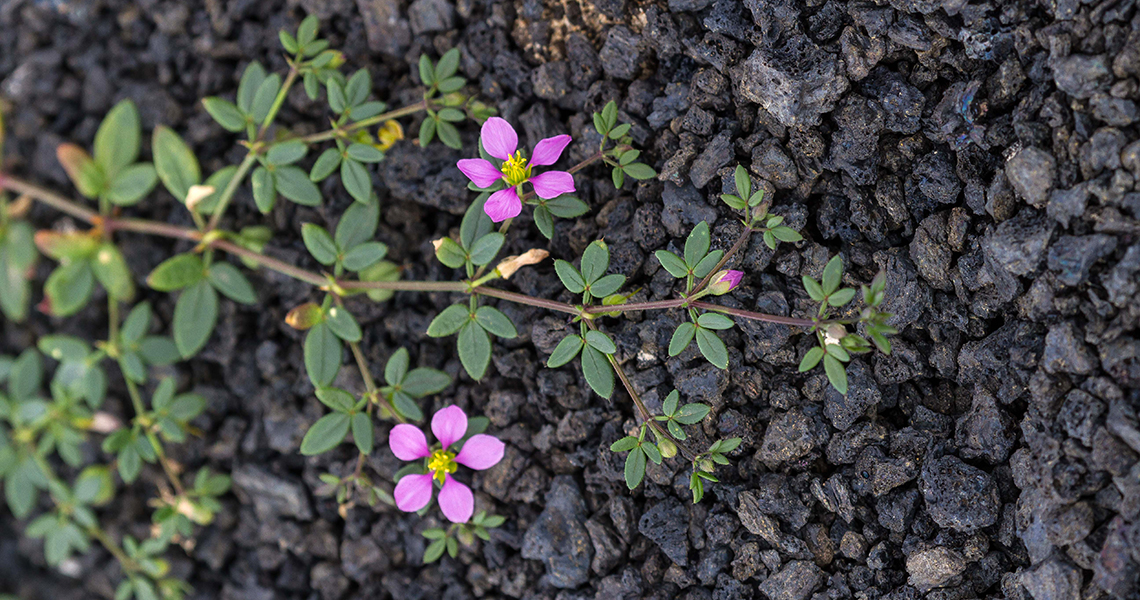Nature and Wildlife of Lanzarote – by Crossbill Guides
Naturalists, birdwatchers, ramblers, photographers and all other nature lovers, a warm welcome on this page about the nature and wildlife of the island of Lanzarote. This website accompanies the Crossbill nature travel guide of Lanzarote and Fuerteventura. This is an online Crossbill Guide ‘light’ for the armchair traveller. It offers some general insights and images to warm you up for your stay, plus some practical information, sites and a free route from the guidebook. Enjoy!
Lanzarote is part of the Canary Islands – a volcanic archipelago in the Atlantic, some 130 kilometres to the west off the coast of southern Morocco. Together with the nearby island of Fuerteventura, this is the only part of Europe that is classified as a desert – that is, if you can call it part of Europe. Although Lanzarote is, like all Canary Islands, part of Spain, the island’s wildlife and ecology have as many relations with the African Sahara as with Mediterranean Europe. But above all, this is ecologically speaking ‘Macaronesia’ – a unique bio-region that unites the Canaries, Madeira, the Azores and Cape Verde Islands.
Landscape of Lanzarote
Extreme volcanism
Lanzarote was born out of volcanic eruptions. It is one of the oldest volcanic islands of the Canary archipelago, yet the landscape you see is formed for the larger part out of recent block lava eruptions. This is a very dark type of lava and Lanzarote consists largely of these black rocks. There are many calderas all over the island, with those in the Timanfaya National Park being the most impressive. Timanfaya is covered by very young lava from the ‘recent’ eruption that took place in 1730.

The Coast
Lanzarote has a wild coastline of cliffs, skerries and, locally, black beaches consisting of pulverised lava. Only on the east coast will you find white sandy beaches, but these are all artificial – constructed for the tourism industry.
Just north of Lanzarote lies a series of small, mostly uninhabited islands, known as the Chinijo archipelago. The largest one, La Graciosa, is closest to Lanzarote and is serviced by a ferry from northern Lanzarote.

The coast, the Chinijo archipelago in particular, has a wonderful birdlife, with breeding shearwaters (Cory’s, Barolo) and petrels (Bulwer’s Petrel and Madeiran Storm-petrel). Most exceptional is the recent colonisation by the Red-billed Tropicbird – a species that otherwise breeds in the equatorial parts of the Atlantic.
Being close to Africa and the bird migration route known as the West Atlantic Flyway, there are always shorebirds on Lanzarote’s rocky coast. Turnstone, Whimbrel and Grey Plovers are common, but many more regularly turn up.
Old and young lava fields
One of the fascinating things of Lanzarote’s interior is the belts of lava from different ages. The block lava (the common lava type on Lanzarote) has a very dark, brownish or greyish colour, close to black. This is the colour of the youngest soils. Over time, a variety of lichens add light, greyish-green colours to the lava fields. Still older lava can be recognised by the plants that have rooted between the cracks. This is the realm of the endemic vegetation of this island, consisting mostly of the rounded bushes of the Kings Juba Spurge, alongside other plants.

Shrubby and sandy desert
The central plain of El Jable consists of volcanic sands and is a dissonant in the largely rocky landscape. The plain comes closest to a real desert and is inhabited by desert birds, the iconic Houbara being the most iconic. This is, most likely, the place in the world where the threatened Houbara is most common.
Sadly, the wildlife of the plain is endangered by touristic developments; not only apartments, but also off-road driving (particularly quads) which pose a major threat to the birdlife.
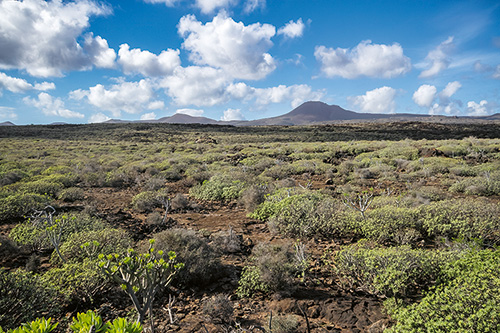
The cliffs and the peaks
Lanzarote is largely a lava desert, in contrast to the higher West Canary Islands, like Gran Canaria and Tenerife. On those islands, the predominant northwestern trade winds collide with the mountains, are forced up and form clouds, mist and rain that sustain a verdant vegetation. Lanzarote’s mountains are not high enough to create such a damp microclimate, but the ridge of the northern Haría peninsula is high enough to produce at least a bit of dampness, enough to sustain a drought-adapted shrubland. This is the range where many rare plants can be found, many of which only occur on Lanzarote. The inaccessible cliff is also where many birds breed, such as Cory’s Shearwater, Barbary Partridge and several species of falcons (Barbary, Eleonora’s and local race of Common Kestrel).
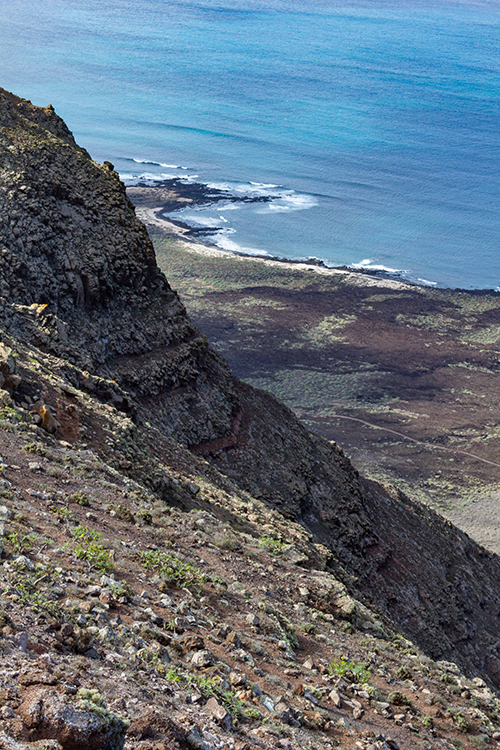
The naturalist top 10
Ten highlights of your visit to exploring Lanzarote
Lanzarote’s only National Park, Timanfaya isn’t known for its wildlife or biodiversity, but for its vast, otherworldly lava fields and craters, which came into existence during the eruptions of 1730.
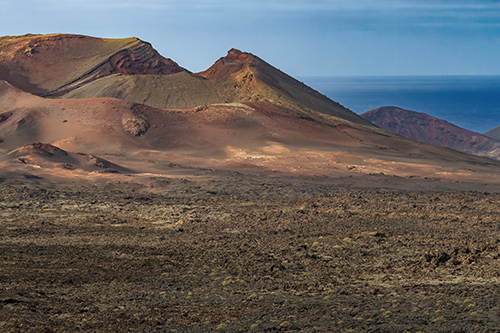
Not much can grow in the interior of Lanzarote, but grapes do, if they are sufficiently watered. A unique form of grape cultivation developed on the island, in which each vine grows in shallow depression protected by a low crescent shaped wall – a curious sight.

The Salinas de Janubio is the largest salt marsh on Lanzarote and attracts large numbers of waders throughout the year. Kentish Plovers and Black-winged Stilts breed, but anything can turn up particularly during migration.
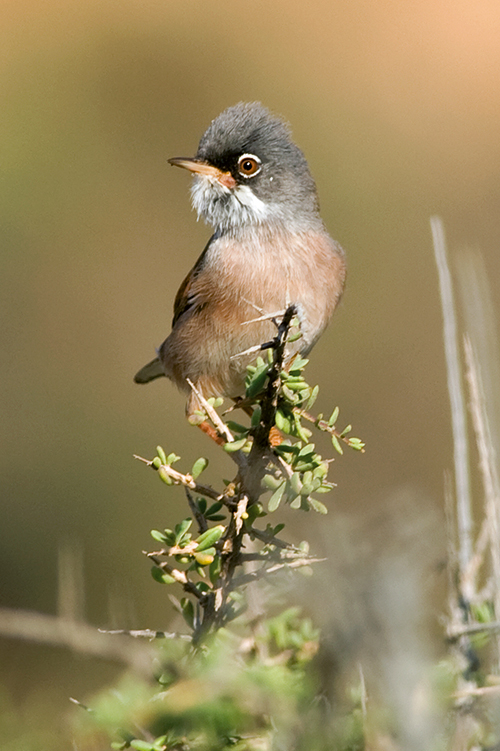
This high ridge rises spectacularly over the north-east coast of Lanzarote, offering spectacular views over the ocean and the islands of the Chinijo archipelago. Small, traditional villages are tucked away in the upper valleys and the more benign climate makes this the flora and butterfly hotspot of the island.

The sandy plain of El Jable is surrounded by mountains and is the main haunt for desert birds on Lanzarote. Houbara, Stone Curlew and many more species can be seen here. Be careful though, as the birdlife is extremely fragile.

The Jameos del Agua is a unique cave, created by the outflow of hot lava and later filled by ocean water. The famous Lanzarote architect Manrique transformed it into a wonderful underground garden, where the pools take centre stage. These are in turn home to a small lobster that occurs nowhere else in the world. The small glow-in-the-dark minibeasts stand out beautifully against the black water.
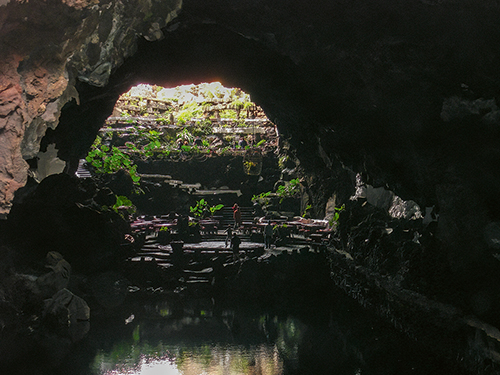
The shallow coastal zone is incredibly rich in fish and other marine life. The many secluded bays are perfect for snorkelling.

The island of La Graciosa is reached by a short ferry trip from the mainland. The little, laid-back village has a bicycle rental, which is the ideal way of exploring this beautiful island, which is like a pristine miniature of Lanzarote.

La Corona is one of the many craters of Lanzarote. A beautiful walk leads you through the Malpaís up to the spectacular crater rim.
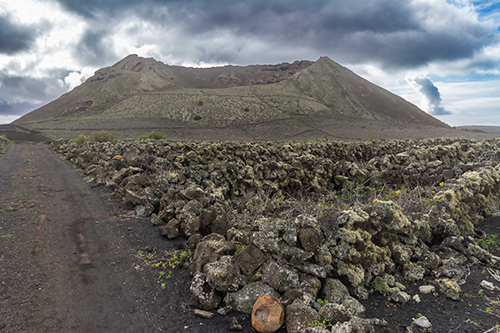
On Lanzarote’s east coast, in the strait between the Canary Islands and the African mainland, whales and dolphins pass through in good numbers. From the headlands they can often be seen with relative ease.

Birds, butterflies and wildflowers – The flora and fauna of Lanzarote
Lanzarote, at first glance, is bare and devoid of interest and life, except for the irrigated gardens in the tourist resorts. Upon closer inspection though, it is exactly the other way round – the volcanic desert is full of life, if you know where to look. It is here where the rare and endemic species, mostly plants and birds, can be found. The richest wildflower and insect haunts are the higher parts, the Haría peninsula in particular, which catch a bit more moisture and are a little less hot.
Flora of Lanzarote
Lanzarote’s wildflowers are a mixture of Saharan plants, herbs with a Mediterranean distribution and ‘Macaronesian’ species that are unique to the Canary Islands. The latter two groups are mostly found in the mountains. Spurges, Gold-coins, Viper’s-buglosses and Sea-lavenders are some of the groups of plants that are particularly rich in species in the Canaries generally, including Lanzarote. Many of them are unique to this island, or only shared with Fuerteventura. Common examples are Lanzarote Gold-coin, the viper’s-bugloss Echium pitardii and the sea lavanders Limonium puberulum and Limonium papillatum.
The older lava fields are covered in the rounded bushes of the spurge Euphorbia balsamifera and E. regis-jubae. A very special wildflower found in the lava fields is the, leafless, succulent (cactus-like) Caralluma burchardii, with its beautiful wine-red flowers. It is a member of a group of Saharan plants, but this species is only found on Lanzarote and Fuerteventura.
Finally, the saline coast has a number of unique species, such as Traganum moquinii, Bassia tomentosa and Matthiola bolleana.
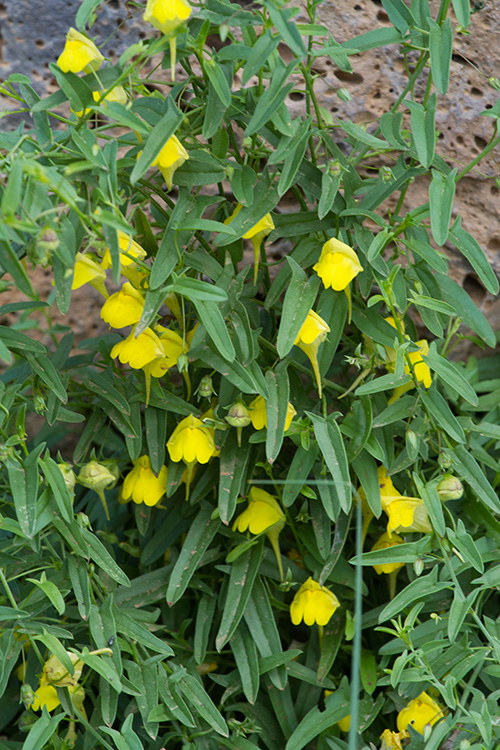
Birds of Lanzarote
Together with Fuerteventura, Lanzarote is the place to find for desert birds. Although the diversity is much lower than in nearby Morocco, there is a number of desert birds that are much easier to see on Lanzarote (and Fuerteventura) than on the African mainland. The prize species is undoubtedly the Houbara Bustard, which is nowhere else as numerous as on Lanzarote.
Other widespread desert birds include Berthelot’s Pipit, Lesser Short-toed Lark (now also called Mediterranean Lark), the local variety of Great Grey Shrike, Trumpeter Finch (mostly in ravines), Cream-colored Courser and Black-bellied Sandgrouse.
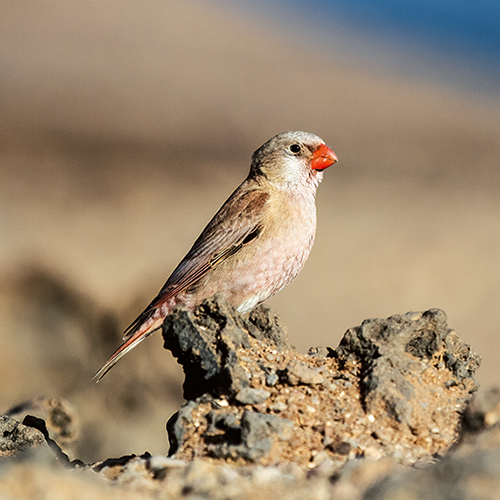
The villages have their own set of birds, with Hoopoe, Spanish Sparrow, Collared Dove and Laughing Dove all present. The traditional terraced fields at altitude (on the Haría Peninsula) supports Canary and African Blue Tit.
Finally, the cliffs and coast have their own set of species, which use the ledges and cracks to breed. These places have an interesting mix of seabirds (Cory’s Shearwater) and ‘classic’ cliff breeders like Barbary Falcon and the local forms of Kestrel, Buzzard and Raven. Quite special for Lanzarote is the large colony of Eleonora’s Falcon (breeding in late summer) and the recent colonisation of the Red-billed Tropicbird, of which probably a handful of birds are now breeding.
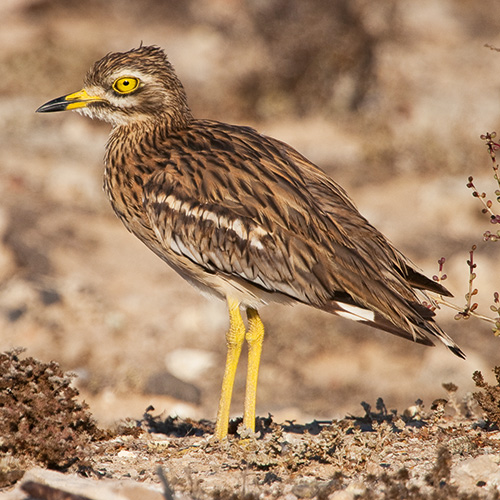
Reptiles and amphibians
Geckos, skinks and a specific kind of lizard, belonging to the genus Galiota (‘giant lizards’) are native to the Canary Islands. Most Canary Island have their own endemic species in each of this group. Lanzarote also has a gecko (East Canary Gecko), skink (East Canary Skink) and lizard (Atlantic Lizard). All of them occur as well on Fuerteventura and the Chinijo islands. Of these, the lizard is easiest to see. Unlike the lizards on the other islands, which can grow up to massive animals, the Lanzarote ‘Giant’ Lizard remains rather small – roughly the size of a Sand Lizard.

Insects
Lanzarote has a limited number of attractive butterflies. A desert species, the Greenish Blacktip, is quite common. In some years, Monarchs and Plain Tigers are also numerous. The higher, more vegetated parts of the island support many endemic insects, including grasshoppers, mantids, beetles and other species.
Not an insect but an invertebrate nonetheless is the blind, cave-dwelling lobster Munidopsis polymorpha. This species is special as the entire world population is limited to a single, waterlogged cave, the Jameos de Agua.

Top 10 species
Ten superb plant and animal species of Lanzarote
The Houbara is a desert bustard that occurs from Morocco to Lybia and, as a separate subspecies, on Lanzarote and Fuerteventura. Throughout its desert range it is extremely scarce and shy due to the high hunting pressure. Fuerteventura and, above all, Lanzarote, are the places where this bird is still relatively numerous, although tourism (particularly off-road driving and increased infrastructure) takes a toll as well.

This weird-looking plant is one of the few cactus-like plants in a European country. It flowers in winter.

This pale, small lobster lives exclusively in a few pools in the lava tunnel of Jameos del Agua and is thereby one of the species with the smallest distribution in the world.
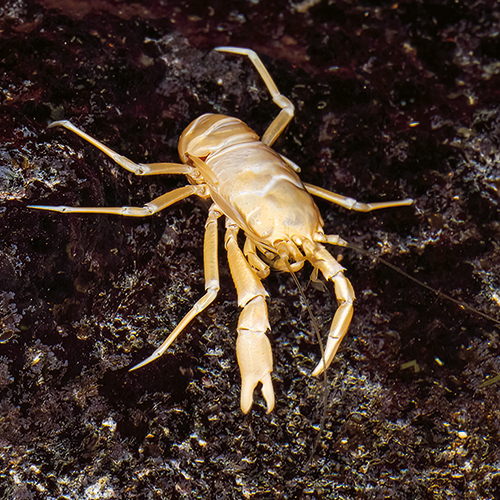
This threatened falcon breeds colonially on islands in the Mediterranean, plus on two places in the Atlantic: on Lanzarote and on an island just off the Moroccan coast. The elegant falcons specialise in hunting migrating birds. It therefore breeds in late summer and feeds its chicks with autumn migrants.

Don Loarie, CC BY 2.0 <https://creativecommons.org/licenses/by/2.0>, via Wikimedia Commons
Great was the excitement when the first Red-billed Tropicbird started to breed in the Chinijo archipelago. This is, as the name implies, an equatorial seabird, and a gracious one as well. It is still scarce, but numbers are increasing and it seems it is here to stay.
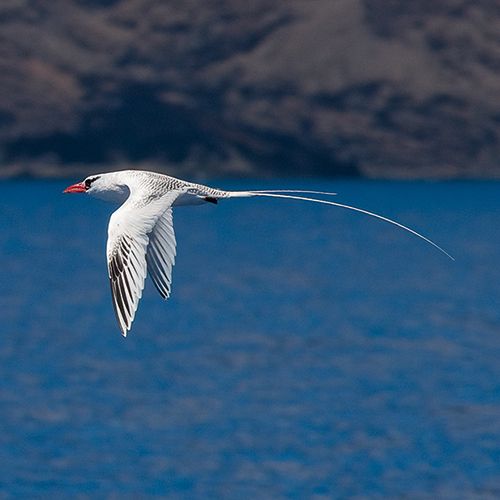
There aren’t many butterflies on Lanzarote, as can be expected from a small desert island, but the Greenish Blacktip is an exception. It is a Saharan element in the fauna of Lanzarote and can be quite common, particularly around Haría.
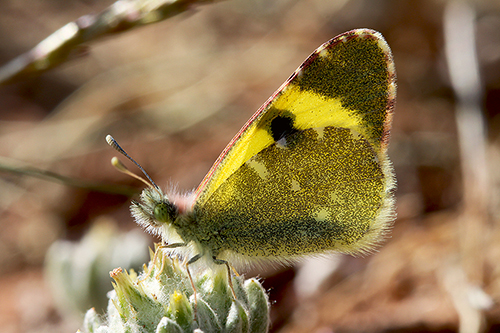
The most easily seen reptile on Lanzarote is the Atlantic Lizard, which is numerous all over the island. It is quite a big lizard, but nevertheless the smallest of a genus of lizards that occur exclusively on the Canary Islands.

Black-winged Stilts are always pretty, even though they are widespread in southern Europe. They are featured here as representative of the many different wader species that are found in the Salinas de Janubio, the largest saltworks on the Canaries and the best spot to see wading birds. The Black-winged Stilts are among the few that also breed in the salinas.

The Canarian flora is famous and the large number of spectacular viper’s-buglosses are among the finest examples of this special flora. On Lanzarote, the Descaisne’s Viper’s-bugloss is the most impressive plant – a proliferous flowering, tall bush, found mostly on the Haría Peninsula, but also often planted in gardens.

Not entirely fair, of course, to make a list of 10 species and then smuggling in an eleventh like this. But we couldn’t choose, as both the Canary as the Canary subspecies of the African Blue Tit are examples of West Canary Island birds that are rare here, but found in the higher, more verdant parts of the Haría Peninsula.
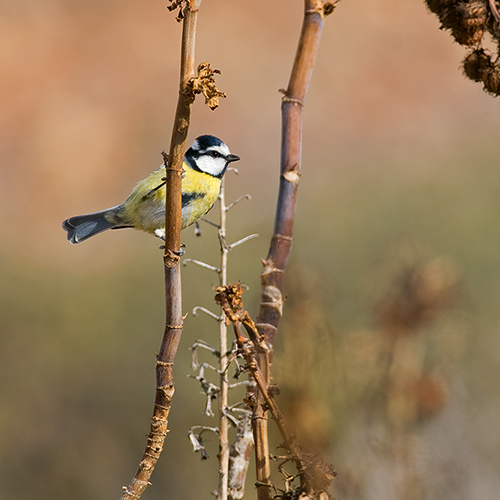
Routes and practicalities
Lanzarote is an easy island to travel – the roads are good, there are regular ferries to the Island of La Graciosa in the north and Fuerteventura in the south. Some of the remoter areas can only be reached on dirt roads, which are generally driveable too, but hire car insurance does not always cover damages sustained off-tarmac.
The eastern part of the island has many resorts and is therefore less attractive for those seeking peace, wildlife and beautiful landscapes. The west and north is much quieter though.
Although Lanzarote is a desert island in the sense that it has little vegetation and a desert climate, much of the land is covered in coal-black lava. Hiking is only attractive in the norther part, the Haria peninsula, which is quite high and relatively green. In the cooler months, there are some spectacular hikes to be made here.
The best routes, both car routes and walking routes, are described in our Crossbill guidebook on Lanzarote and Fuerteventura.
Sustainable tourism
There is no such thing as a totally environmentally friendly trip to the Canary Islands, but there are ways to minimise your impact on the environment.
- A lot of food is imported from the mainland – either by boat or, if it is fresh, by plane. As far as possible choose foods produced on the islands, in particular the fresh goods like vegetables, fish and meat.
- Tap water is safe all over the island. Use it instead of bottled water to minimise waste.
Interesting links about wildlife on Lanzarote
Wildflowers of the Canary Islands (in Spanish)
The book
The Crossbill Guides are the most comprehensible nature travel guides available. Each Crossbill Guide covers in depth descriptions on landscape, habitats, geology and all the species groups, and links these to routes where this can be seen.
These routes are typically a mixture of walking routes and car routes with stops and short walks. Combined, these routes cover all the sites for seeing birds, butterflies, dragonflies, plants, mammals and reptiles. They are also set out to show you the finest examples of the ecosystems and geological features. In short, everything for nature lovers.
Lanzarote is covered in the Crossbill Guide to Lanzarote and Fuerteventura (2023). It contains:
- 176 pages
- 13 detailed routes
- 22 site descriptions
The authors
Dirk Hilbers (NL, 1976), set up the Crossbill Guides Foundation and travels Europe to research the guidebooks. This is the 17th guide he worked on. As a biologist, when not in the field, Dirk Hilbers is a free-lance writer and lecturer in the field of nature education and environmental ethics.

Kees Woutersen (NL, 1956) has lived in Huesca for 20 years, working as a nature and bird guide throughout Spain. He runs his own travel company, Aragon Natuurreizen. Kees Woutersen is author of various books on the birds and natural history of the Pyrenees and Aragon, e.g. the Atlases of the Birds of Huesca and Ordesa.

Constant Swinkels (NL, 1995), has been a naturalist from the moment he was able to hold a pair of binocu- lars. His interests are broad – from birds to wildflowers and butterflies to reptiles. Constant specialises in insect – vegetation interactions.



